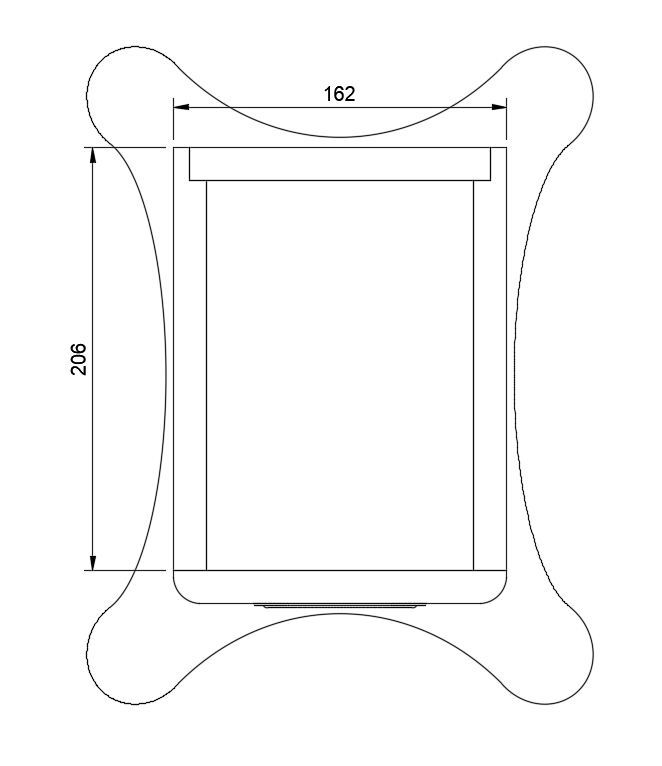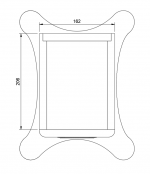I have finally got my system set back up and working again, no new measurements as yet but it sounds pretty good with the old settings anyway 🙂
Wauu
 happy listening there into that chair 😀.. (now imagne should there really miss some small bits you need use same DAC and maybe poweramp as old settings was based on).
happy listening there into that chair 😀.. (now imagne should there really miss some small bits you need use same DAC and maybe poweramp as old settings was based on).Thanks for the comments, hopefully I can keep it looking this way 

I think you used a single sheet of fibreglass from the pictures in your thread, my bigger panels are in the region of 200mm thick so they could start to affect things quite low in frequency. I also use the wall for bass support so I don't want to lose that aspect either, once the mic is setup moving a few panels is easy enough to make the exercise worth trying.I have tried it, while making measurements. Not a big difference strangely enough...
The only influence I could find from the back wall was bass support. That determined the baffle from wall distance for me.
The DAC and amp are the same ones used for the base measurement, M50 and MOD686 🙂Wauuhappy listening there into that chair 😀.. (now imagne should there really miss some small bits you need use same DAC and maybe poweramp as old settings was based on).
Yes, single sheet of fiberglass. I was trying to get a grip on the IR and the reflections visible after the main pulse. After putting absorption on the (left) side the biggest peaks that were left (at ~6ms) were due to the wall behind the listener.
My big poster/panel wasn't properly centered between both speakers. It showed in the IR as some small leftover peaks in my right channel that weren't there on my left side IR. I might be able to do a little better this time around.
As peaks in the IR usually are the higher frequencies it isn't any wonder I didn't see much change. However observing phase (while gating the measurement) also helped to analyze the reflection free window. I've spend quite a few days to try and learn how to "read the room" as to be able to relate it to what was seen in measurements. With the greater task of trying to get to grips with what was heard and how to find it in measurements. The cleaner the IR, the more I could relate the measurements with things I've heard. Considering we listen with two ears. That's how the mid/side EQ got started.
I'm hoping to continue that study some time soon, as it was quite rewarding. Going back to single point measurements and not the averaged vector, as the single point has always had the most thrilling results.
My big poster/panel wasn't properly centered between both speakers. It showed in the IR as some small leftover peaks in my right channel that weren't there on my left side IR. I might be able to do a little better this time around.
As peaks in the IR usually are the higher frequencies it isn't any wonder I didn't see much change. However observing phase (while gating the measurement) also helped to analyze the reflection free window. I've spend quite a few days to try and learn how to "read the room" as to be able to relate it to what was seen in measurements. With the greater task of trying to get to grips with what was heard and how to find it in measurements. The cleaner the IR, the more I could relate the measurements with things I've heard. Considering we listen with two ears. That's how the mid/side EQ got started.
I'm hoping to continue that study some time soon, as it was quite rewarding. Going back to single point measurements and not the averaged vector, as the single point has always had the most thrilling results.
Last edited:
I think the average is quite useful in less treated more reflective rooms but in your case and mine now the single point does seem to respond better to this sort of processing.Going back to single point measurements and not the averaged vector, as the single point has always had the most thrilling results.
The vector average is averaging of the impulse responses, both magnitude and phase.Mya I interpret "averaged vector" as: averaged multi position?
//
You can also do frequency averaging where the phase is ignored.
I agree, it also works better in combination with the mid/side processing. I've spend quite some time with averaging, and although it certainly wasn't bad, the better results came from single point with maybe some fine EQ tweaks to cover a natural balance over a wider area.
I've had some more time to listen since the room remodel and I'm happy with the result so far. The sound is quite consistent around the room, bass is good at seated height but reduces considerably when standing. The extra reflections from removing the carpet are not an issue.
I tried moving the damping panels from the first reflection point to behind the arrays. There wasn't really space to fit them in properly due to the speaker base and curtain track but I shoehorned them in for a quick listen.
Two things changed at once which makes it hard to identify which change belonged to each difference.
I think there is some potential in putting a thick enough absorber behind the speakers. I would need to build them differently to fit properly but I may well do that at some point. I did feel like there was some cleanup in the lower midrange upper bass that was worth further experimentation and measurement.
Introducing the lateral side wall reflections was a double edged sword. There was an increase in soundstage width but it came with a blurring of the image positions. There was less phantom centre tonal change with position. Acoustic music sounded bigger and nicer, rock and difficult tracks just more messy, not bad but not an improvement. I can see why it might be preferred in the right circumstances but for me the panels went back to where they were before.
I tried moving the damping panels from the first reflection point to behind the arrays. There wasn't really space to fit them in properly due to the speaker base and curtain track but I shoehorned them in for a quick listen.
Two things changed at once which makes it hard to identify which change belonged to each difference.
I think there is some potential in putting a thick enough absorber behind the speakers. I would need to build them differently to fit properly but I may well do that at some point. I did feel like there was some cleanup in the lower midrange upper bass that was worth further experimentation and measurement.
Introducing the lateral side wall reflections was a double edged sword. There was an increase in soundstage width but it came with a blurring of the image positions. There was less phantom centre tonal change with position. Acoustic music sounded bigger and nicer, rock and difficult tracks just more messy, not bad but not an improvement. I can see why it might be preferred in the right circumstances but for me the panels went back to where they were before.
Hi Fluid,Hello, I love your project, I have seen the drawings of the boxes and the bases, do you have the dimensions of the same please?
I didn't get a notification about your post so I have only just seen it.
The array cabinet is 2160mm tall, 162mm wide and 222mm deep. 206mm for the cabinet and 16mm for the baffle.
Here is a scale drawing with dimensions that you could scale if you want to copy it. The base is 200mm between the centres of the feet pads left to right and 275mm front to back.

The array cabinet is 2160mm tall, 162mm wide and 222mm deep. 206mm for the cabinet and 16mm for the baffle.
Here is a scale drawing with dimensions that you could scale if you want to copy it. The base is 200mm between the centres of the feet pads left to right and 275mm front to back.
Attachments
Friends I have 12 drivers total of peerless TC9 and 2 drivers of peerless XLS 10
What would you suggest to make a fullrange system.
What would you suggest to make a fullrange system.
6 drivers per side will be a very short line, more would be better. If that isn't possible (or even if it is) some form of shading would help to shape the response.
Good explanation and walkthrough here https://www.diyaudio.com/community/...heir-behavior-through-simple-modeling.388279/
Good explanation and walkthrough here https://www.diyaudio.com/community/...heir-behavior-through-simple-modeling.388279/
I would make two heads on two cubes. Each head Is composed of six pentagons, each housing a speaker.
With a 3d printer should be Easy to make the insert-click for each frame to be held to the central One, sort of flower.
The rotation of the petals might aloow for centering ...the beams to be displayed, possibiy for minimal interference, going from convex to concave...allows many options!
The underlying cube (or above the head when suspended)Is for the XLS, for simplicity
With a 3d printer should be Easy to make the insert-click for each frame to be held to the central One, sort of flower.
The rotation of the petals might aloow for centering ...the beams to be displayed, possibiy for minimal interference, going from convex to concave...allows many options!
The underlying cube (or above the head when suspended)Is for the XLS, for simplicity
- Home
- Loudspeakers
- Full Range
- Full Range TC9 Line Array CNC Cabinet
